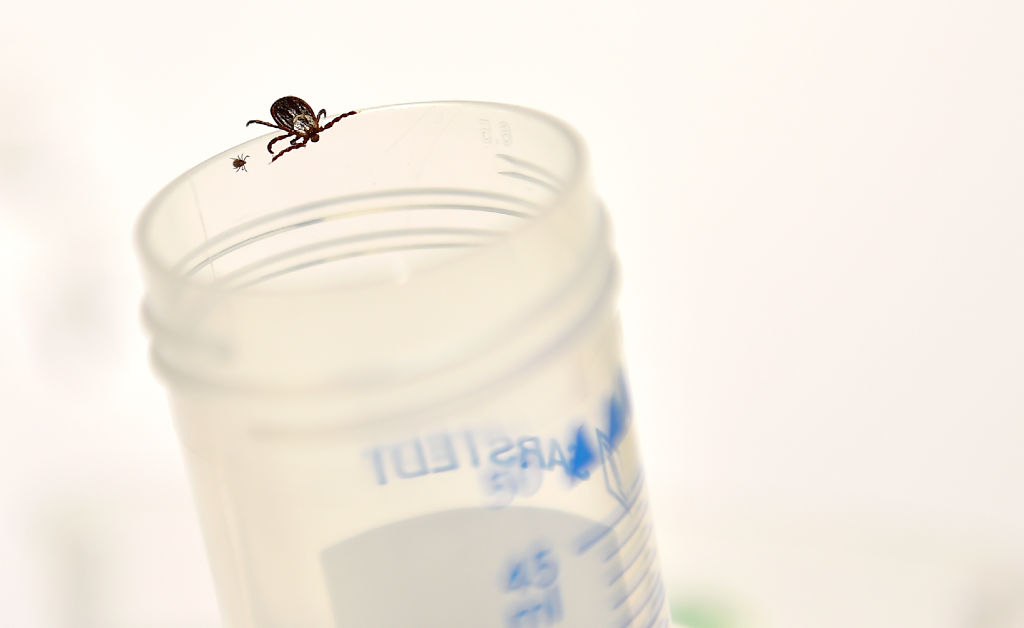I struggled to pull myself out of bed in the morning. I slept for hours at lunch breaks and was having a hard time focusing. I was working six days a week as an editor at one of the world’s largest newspapers. I needed to concentrate. It was my first year there on a fixed-term contract. I didn’t have the security of knowing I would be hired after; I had limited scope to make mistakes. Articles that required extensive fact-checking, style correction and careful proof-reading felt like an insurmountable obstacle. What was wrong with me?
I booked a doctor’s appointment to check my vitamin levels. I’m anemic, so that could have been a possibility. Perhaps it was simply lockdown fatigue — after all, lacking external stimuli and human connections and working from a laptop at home could well affect motivation. The doctor suggested I test for Lyme disease, just in case. “What’s Lyme disease?” I asked. “Don’t worry — just test for it, you never know,” she responded. A week later I received a call from the doctor’s office: “All your vitamin levels are regular, but you tested positive for Lyme disease. Sorry about that. I suggest you see a specialist immediately.”
I told a friend and she panicked: “Do you know that your face can become paralyzed? That’s what happened to one of my friends from school.” I started researching the condition online, where I learned that Lyme disease — largely caused by the bacterium Borrelia burgdorferi — can carry debilitating long-term side effects if left untreated: fatigue, muscle pain, brain fog, cognitive impairment, face paralysis, memory loss and depression. On Twitter, one user said, “I had Lyme disease way back which went undisguised for two years… Later I found myself in a car, on a road, with no idea where I was.”
Lyme disease is largely curable through antibiotics if caught early — meaning within thirty days of being bitten by a tick — but things get trickier if it goes untreated for months or years. However, an estimated 36 percent percent of those diagnosed and treated early for Lyme disease still remain ill after treatment. In the US, Lyme diagnoses have risen 357 percent in rural areas and 65 percent in urban areas in the past fifteen years, new data shows.
In my head, I went through where I could have been bitten by a tick. I did not recall a tick bite rash, but around half of patients hadn’t either. I tried to work out if my infection was recent — it wasn’t. I remembered a trip to upstate New York three months prior, where an estimated 30 to 50 percent of ticks carry the disease. I had been infected for more than thirty days; making the likelihood of me developing chronic Lyme disease— the long-term version of Lyme disease — even higher.
I did further research to find out how to prepare for future symptoms. The mental health risks I found are startling; a study found that patients with a Lyme diagnosis have a 28 percent higher rate of mental disorders and are twice as likely to have attempted suicide than individuals without a Lyme diagnosis. Yet chronic Lyme disease is the subject of vigorous debate in the medical community, with some doctors suggesting there is no clinical evidence to support its existence and that long-term antibiotics do more harm than good. The CDC does not recognize chronic Lyme as a disease, so insurers often refuse to cover the costs for long-term treatment. Dr. Richard Horowitz, who claims to have treated more than 12,000 patients for chronic Lyme disease, says the disease is complex and multi-varied, and that, “The standard treatment protocol (consisting of thirty days’ antibiotic therapy) doesn’t offer the cure for most sufferers. You can’t just blow up bugs. Detoxification, including the removal of heavy metals [such as mercury or lead], hormone balancing, and ramping up immune function are equally important.” In other words, a more holistic approach is needed.
I started with a cycle of antibiotics, chief among them doxycycline, and I decided to resign early from my fellowship to focus on recovering my health. After a few months, I had another blood test — my results came back negative for Lyme. I felt relief; even though inside I already knew I had overcome that battle, because the symptoms had all but disappeared. I believe that antibiotics alone weren’t the cause for my recovery. As Dr. Horowitz said, it was through a multi-varied treatment. I started taking a variety of supplements: the immune booster Immun’Age, vitamin B complex, vitamin C, vitamin D, vitamin E, spirulina, iron and more. I also began drinking around three liters of water a day, recovering lost sleep from work and started to exercise again daily (which I had largely neglected due to long work hours and lockdown). It was at that time that I began to feel the symptoms subsiding.
This triggered my curiosity to look up for alternative treatments. A new medical study published in 2018 suggests that thirty-five essential oils were more effective than antibiotic treatment: “We found that these essential plants were even better at killing the ‘persister’ forms of Lyme bacteria than standard Lyme antibiotics.” Dr. Ying Zhang, a professor in the Department of Molecular Microbiology and Immunology at the Johns Hopkins Bloomberg School of Public Health in Baltimore, said. Garlic bulbs, allspice berries, myrrh trees, spiked ginger lily, and may chang trees “completely eradicated” all Lyme disease bacteria in seven days, with no regrowth in twenty-one days. In vivo clinical trials — meaning testing with living subjects like animals, humans or cells — are still needed to confirm the efficacy of these treatments. Why haven’t those tests been conducted, given the severity of the disease and the increase in cases?
There used to be a Lyme vaccine — LYMErix — introduced into the market about twenty years ago by SmithKline Beecham, which went on to become the pharmaceutical giant GlaxoSmithKline. It was approved by the Food and Drug Administration in 1998. But by 2002, the company abandoned LYMErix, citing poor sales. In its first two years on the market, 905 adverse effects were reported, such as aching arthritis, fatigue and neurocognitive dysfunction — the same symptoms the vaccine was purported to prevent or cure from the disease. A class action lawsuit was filed. Despite approval from the FDA and CDC that the vaccine did not cause side effects (the same medical institutions which deny the existence of chronic Lyme disease in the first place), the lawsuit prompted a fall in sales that made it too costly for the company to keep the vaccine on the market.
Now the French pharmaceutical company Valneva has joined forces with Pfizer to create a new vaccine similar to LYMErix; their partnership may create a monopoly strong enough to resist complaints from patients. The new vaccine works in a way that’s similar to LYMERix by targeting an outer surface protein of the Borrelia bacteria that cause Lyme disease, raising questions as to whether it will produce similar side effects.
But what about research exploring natural remedies, such as the thirty-five essential oils, to be a good preventative for the long-form stages of Lyme disease? What about holistic approaches that focus on addressing psychosomatic weaknesses that cause the immune system to lower its defenses?
When looking at Covid-19 by comparison, a medical study published in 2022 found that anti-inflammatory drugs, especially non-steroidal ones, translated into a “reduction of over 90 percent in the overall number of days of hospital stay and related treatment costs.” Another study conducted in 2022 shows that Vitamin D supplements administered to hospitalized Covid-19 patients are “associated with a significant reduction in mortality, ICU admission and need for mechanical ventilation.”
Maybe the medical industry should consider treatments for diseases such as Lyme that don’t merely focus on vaccines and antibiotics. But perhaps such cures aren’t as profitable for pharmaceutical companies.

























